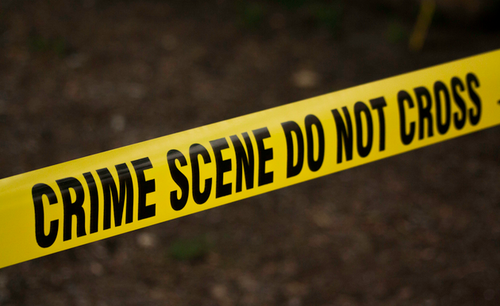How Black Lives Matter Got Police Violence Wrong
Authored by Christopher J. Ferguson via The Epoch Times (emphasis ours),
In the early 2000s the United States enjoyed comparative racial optimism. Majorities of both black and white citizens felt race relations were improving. Even left-leaning NPR highlighted “colorblindness” as an ideal. A generation later, race relations have nosedived. We hear regularly about “systemic racism” and “white supremacy.” Colorblindness now is considered racist. This whiplash may leave many people wondering what happened.
The 2014 Collapse in Race Relations
The collapse in race relations began in 2014. Exactly why this year was pivotal is unknown, though it coincides with the debunked “hands up, don’t shoot” framing of the Michael Brown killing and a larger “great awokening” wherein extreme identitarian views became more influential on the political left. Since 2014, little data suggests race disparities have gotten worse. Racist attitudes in the United States are at historic lows. However, news media coverage worrying over racism soared.
I studied this issue empirically in 2021. I wanted to see whether actual police shootings of unarmed black men correlated with race relations or whether news media coverage highlighting police shootings of black men was a better predictor. It turns out race relations are unrelated to actual police shootings, but correlate with news media coverage, which tends to obsess over shootings of black Americans while ignoring shootings of other individuals.
The Moral Panic Over Race and Policing
After the 2020 murder of George Floyd, the United States experienced a “racial reckoning.” News media claimed police were systemically targeting black Americans for fatal violence. Defunding or even literally abolishing policing became serious policy proposals. The United States, we were told, was systemically racist.
Data on policing and race is complex and nuanced. Police killings of unarmed suspects are rare, according to the Washington Post, and they’ve been declining. Numbers peak at 95 for all races in 2015, declining to 32 for all races in 2021.
When it comes to police shootings of unarmed individuals, white suspects are shot more often than black suspects (by contrast, Asians are rarely shot by police compared to either group). Though more unarmed whites than blacks are killed by police, black suspects are indeed proportionally overrepresented. We can see the proportional differences in the following chart:
However, commission of violent crime is also ethnically disproportional. Black and Hispanic men commit violent crimes disproportionally more often than do white or Asian men. That police shootings and commission of violent crime so neatly track one another is not a coincidence.
One might conclude that, perhaps, overrepresentation of black Americans as perpetrators of violent crime might be due to overpolicing of black communities. However, when we look at victims of homicide, most of which are the same race as the killers, we see the same pattern of black victims being overrepresented. This means the overpolicing hypothesis does not fit the data.
It is also worth noting that most young men of any ethnicity do not commit violent crimes. Race itself is not a determinant of violent crime. In one recent study, although racial composition of neighborhoods predicted violent crime, race no longer predicted violent crime once other community factors such as insufficient food, housing issues, air pollution and proportion of single-parent homes are controlled..
Studies largely find the same thing when it comes to excessive use of police force. In another recent study, we found that class issues, particularly communities experiencing higher levels of mental health issues among residents — not race — predicted reports of excessive police force (except for Latinos, who reported less police force). To be fair, studies on this do vary in conclusion. However, in my view the weight of evidence suggests that class, not race, predicts excessive police force.
We found that higher levels of mental health problems among community residents predicted reports of excessive police force. This is probably because police are likely coming into contact with mentally ill residents who may escalate an encounter that began over something trivial. Other studies also suggest the chronically mentally ill more often experience physical force during police encounters. The mentally ill may struggle to respond to aggressive police commands. Thus, relatively minor encounters initially may intensify into dangerous situations. Better police training with mental illness may help.
Progressive “Fixes” Have Often Made Things Worse
Though often ostensibly speaking on behalf of minority groups, progressive theories on race have often made practical situations worse. The most obvious cost to low-income neighborhoods has been in delegitimizing or even defunding police and the predictable surge in crime that created. Evidence does suggests that the George Floyd protests and riots were associated with increased resignations of police officers as well as decreased policing in high-crime neighborhoods. These in turn, were associated with increased violent crime.
There are more subtle, harmful impacts as well. Informing people that they are at ever-present danger from police can be traumatizing. Research has long demonstrated that convincing people they are victims causes them to perceive injustice where it may not actually occur.
It doesn’t help the Black Lives Matter organization has undermined confidence in its mission through a lack of transparency on financial matters and spending millions on mansions for its leaders, with comparatively little to show for how they have helped ordinary Black poor or working-class people.
There is a wide space between thinking the United States is a racial utopia and that it’s an early 20th century apartheid state. But if we promote pessimistic narratives that are not well-grounded in data and focus on “solutions” that emphasize our differences and conflicts, we may actually risk the exact bad outcomes we hoped to alleviate.
Christopher J. Ferguson is a professor of psychology at Stetson University in Florida and author of “Catastrophe! The Psychology of Why Good People Make Bad Situations Worse.”
Tyler Durden
Thu, 05/25/2023 – 19:00
via ZeroHedge News https://ift.tt/yVWiJRj Tyler Durden
